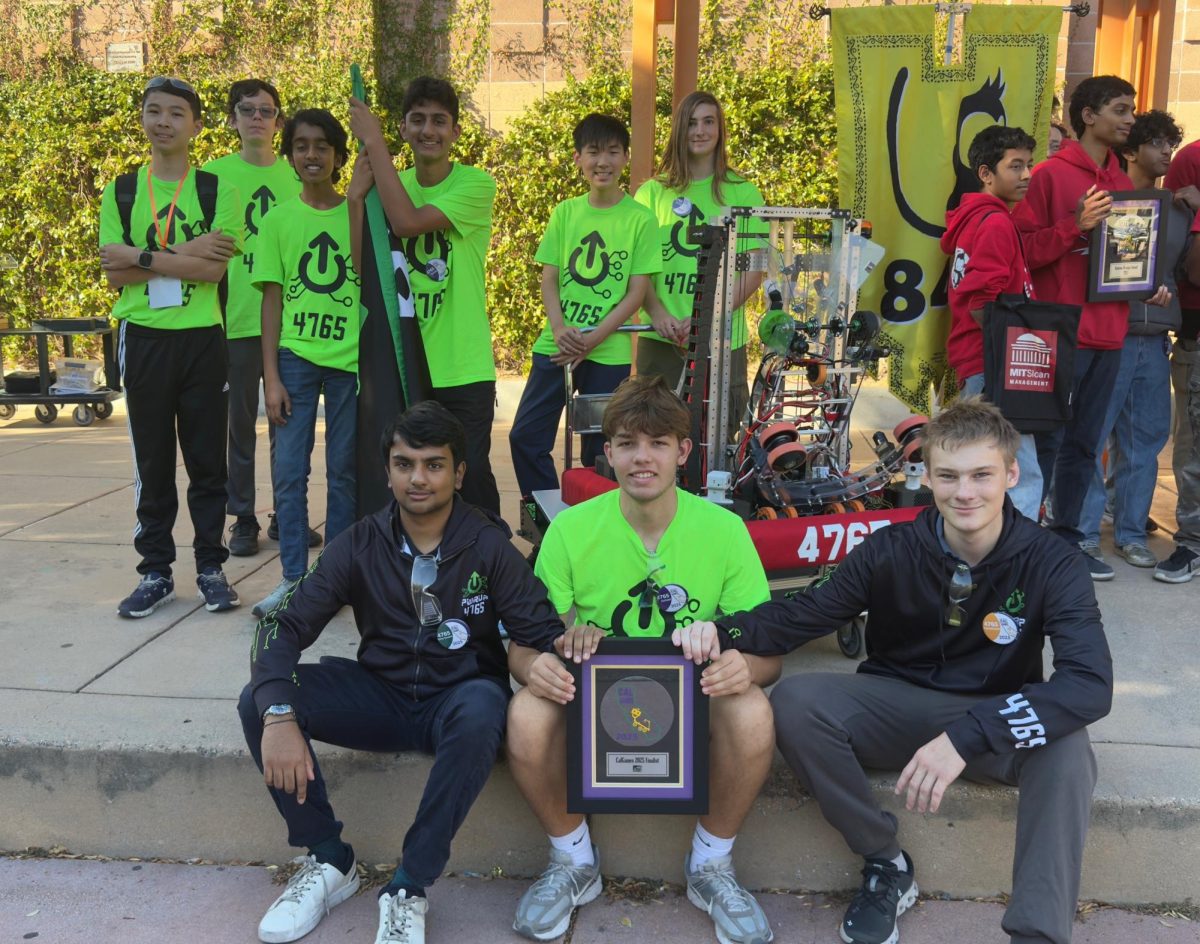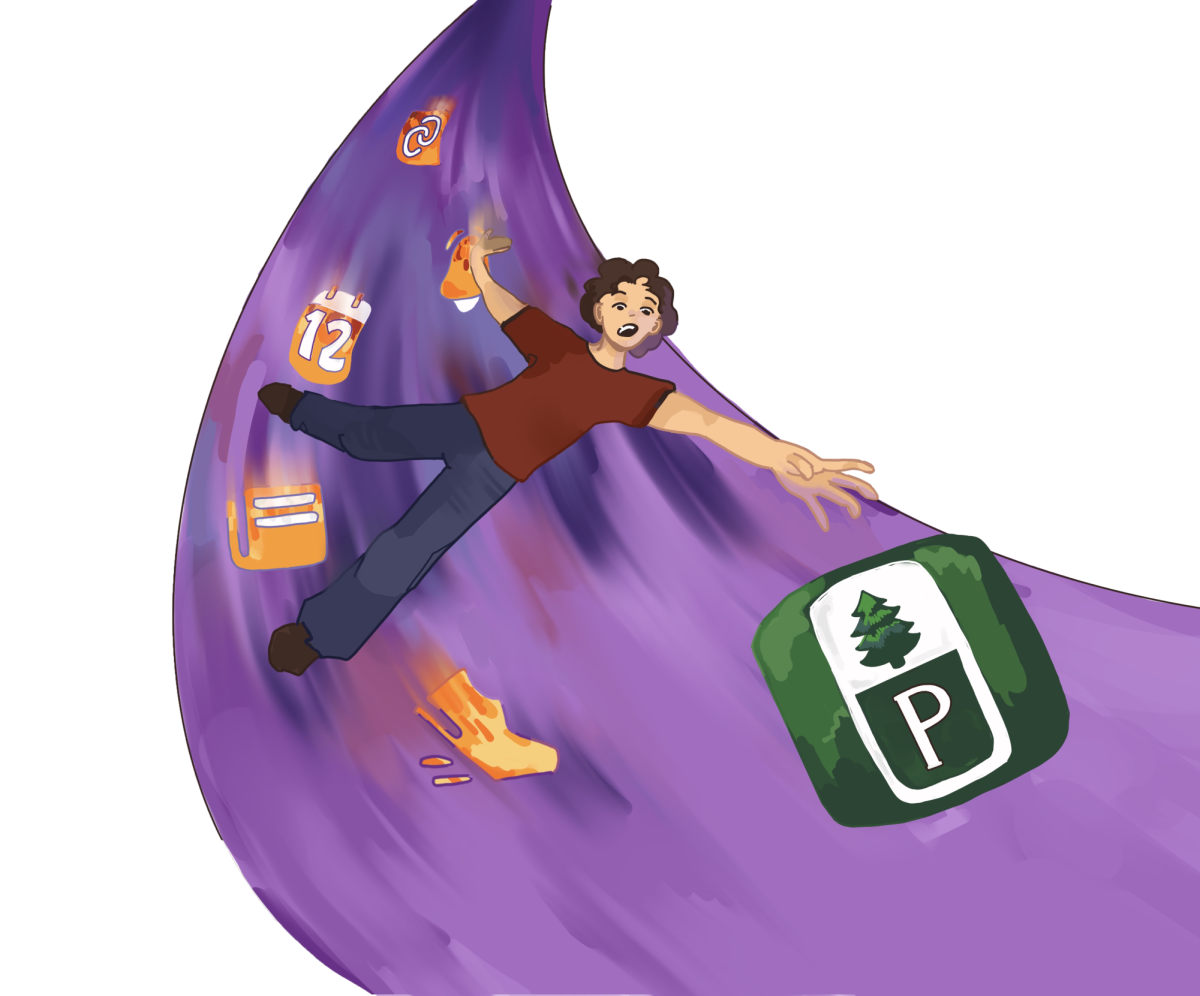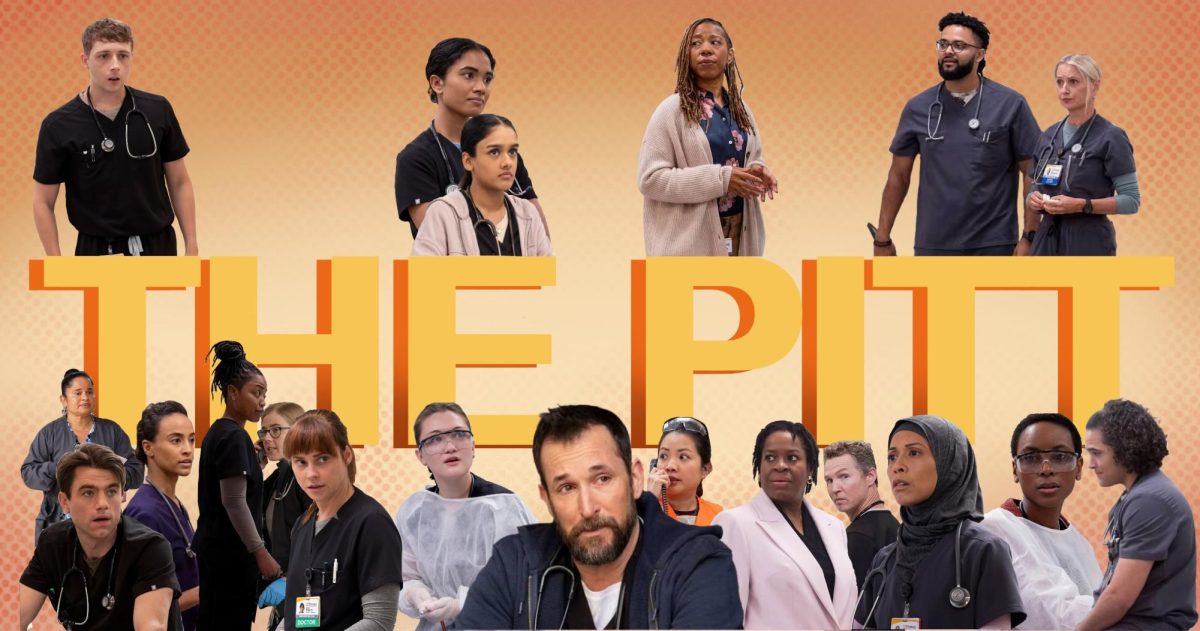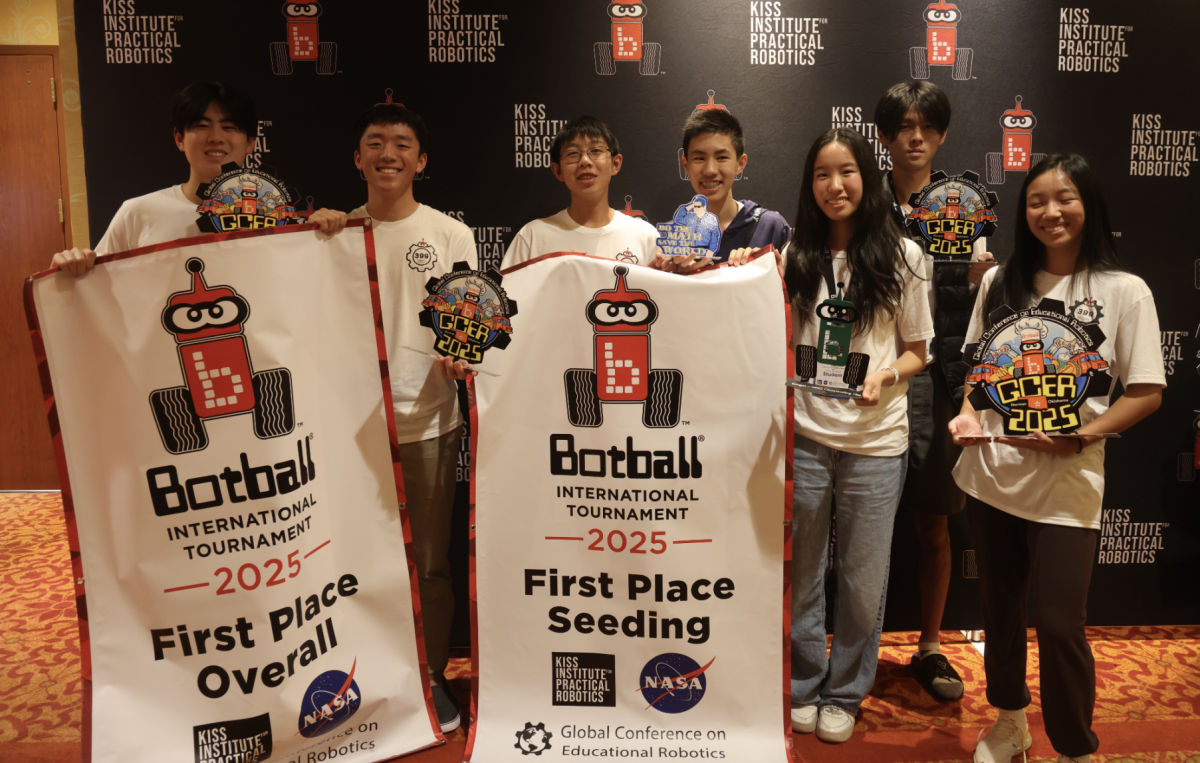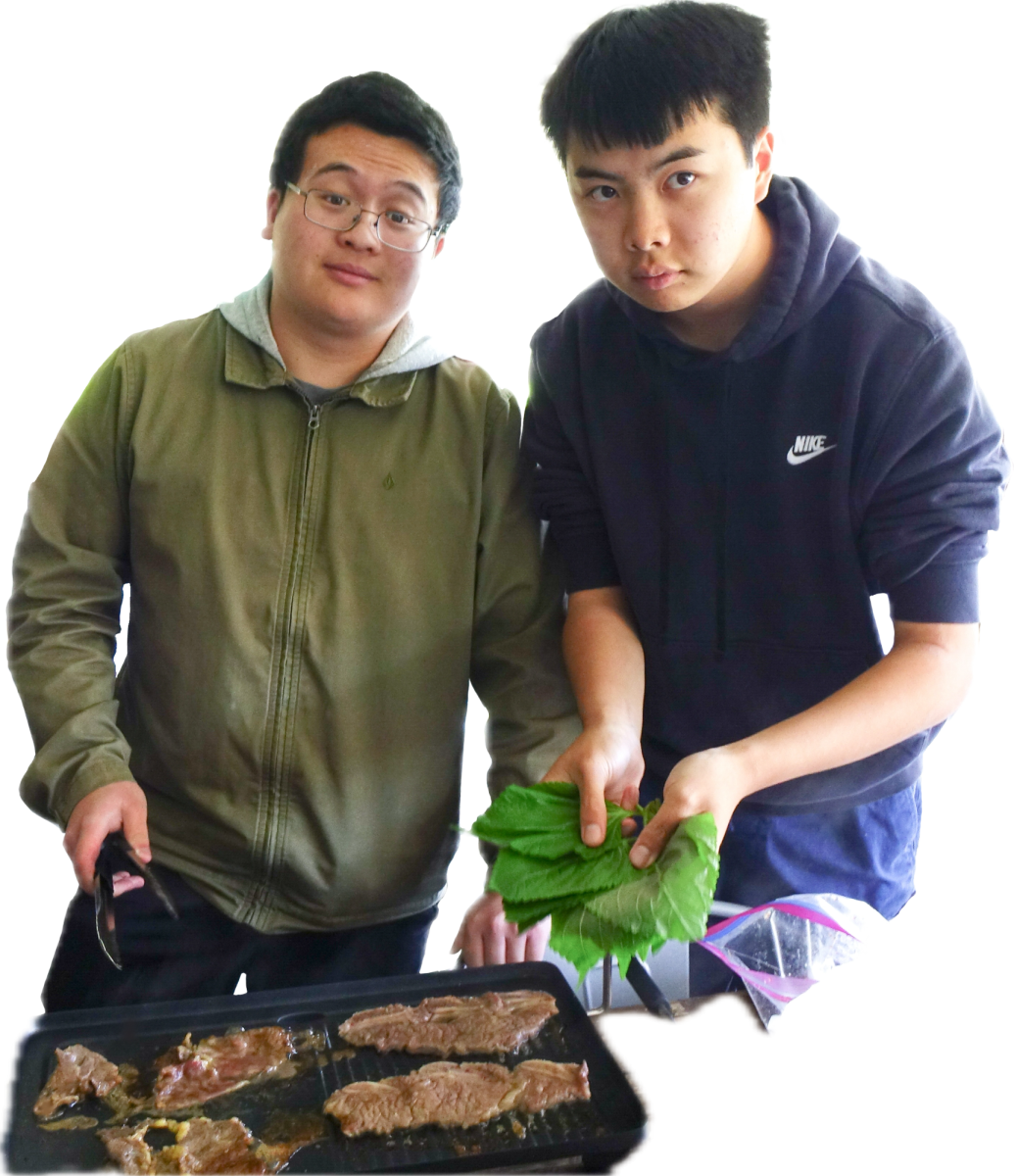Pinewood’s robotics team PWRUP 4765 reached an unprecedented accomplishment at this month’s CalGames competition by reaching the finals and finishing second place overall. During the qualification rounds, the team’s robot struggled with an issue that placed them low in the rankings, and it seemed unlikely that they would advance to the playoffs.
However, the pit crew persevered and fixed the problem, and in a remarkable turn of events, PWRUP 4765 was selected to join the alliance with the highest-ranked team.
“[It was] the very last pick of that first alliance, the very last chance we would possibly have, and we weren’t the obvious pick further down in the rankings,” robotics coach Will Rees said. “[It] was a moment where the team felt validated.”
PWRUP 4765 began preparing for the competition in September, meeting after school and on the weekends. During these meetings, the team was busy practicing driving the robot and preparing the mobile pit workshop.
“The CalGames is an unofficial replay of last year’s game, so we used last year’s robot,” Rees said. “It needed some software work, and it needed some hardware upgrades.”
Senior Jayanth Ananth, a drive coach for the robot, devised parts of the gameplay strategy such as advising the drive team on where to direct the robot. He believes that software updates were essential to the team’s success at the competition.
“I think we had major improvements, especially in terms of robot alignment [and] robot vision, which allowed us to increase our scoring capabilities,” Ananth said. “That really helped us progress throughout the competition and eventually to our second place finish.”
The objective of the coral reef-themed competition was to score as many points as possible by adding “coral” PVC pipes to a rack or scoring “algae” green balls into a goal. The team’s strategy included an elevator wrist mechanism that focused on scoring coral, which was worth more points.
An additional way to score points was through automation. As a software engineer for the team, senior Denis Koterov programmed the robot’s autonomous navigation and was a field technician at the competition.
“The big thing that we changed this year was adding a lot more automation,” Koterov said. “Not many teams have that.”
Senior Alan Skelley, the drive captain and hardware team member, commends the collaborative effort that enabled the team to overcome obstacles.
“What went well was definitely our consistency on the drive team and our ability to incorporate new members,” Skelley said. “At the beginning of our competition, our mechanism was broken, and it took us a little bit of time to figure that out. But after that, we were very consistent.”
Rees has high confidence in the team as they work on building a new robot for the FIRST Robotics Competition next spring.
“I’m super proud of the team,” Rees said. “There were also substantial contributions from our new members this year, and I think it shows a lot of promise for the future.”

